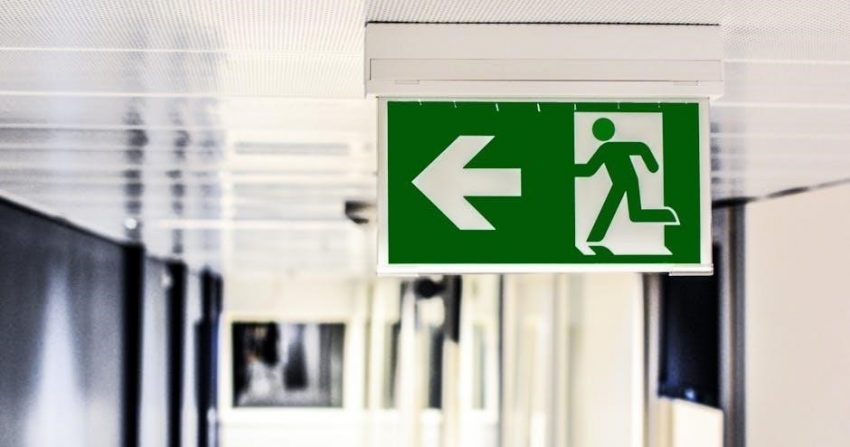Proper sizing of grease traps is crucial for effective wastewater management, preventing backups and ensuring compliance with local regulations. It involves calculating flow rates, fixture units, and capacity to determine the appropriate size for your establishment, ensuring optimal performance and environmental safety.
Why Proper Sizing Matters
Proper sizing of grease traps is essential to ensure efficient operation and prevent issues like clogging, backups, and environmental contamination. An undersized trap may fail to capture grease effectively, leading to sewer blockages and potential fines. Conversely, an oversized trap can increase initial and maintenance costs unnecessarily. Correct sizing ensures optimal performance, reducing the risk of system failures and maintaining compliance with local regulations. It also helps in minimizing waste disposal costs and preventing harmful environmental impacts. Proper sizing balances the flow rate, fixture units, and grease production, ensuring the trap functions efficiently and reliably. This critical step safeguards both the facility and the environment, making it a cornerstone of effective grease management systems.
Overview of Grease Traps and Their Function
Grease traps, also known as grease interceptors, are plumbing devices designed to capture and separate fats, oils, and greases (FOG) from wastewater. They are typically installed between kitchen fixtures and sewer lines to prevent FOG from entering the drainage system. Grease traps work by slowing down wastewater flow, allowing FOG to cool and solidify, forming a layer on the surface. This separation prevents clogs in pipes and protects municipal sewer systems from contamination. Regular maintenance is crucial to ensure their effectiveness, as accumulated grease can lead to backups and environmental issues. Properly functioning grease traps are essential for commercial kitchens, restaurants, and other establishments that generate significant FOG, helping to maintain hygiene and comply with environmental regulations. Their role is vital in safeguarding both individual plumbing systems and public infrastructure.

Key Considerations for Grease Trap Sizing
Proper sizing involves evaluating flow rates, fixture units, and capacity to ensure effective grease separation. Compliance with local codes and grease production rates is essential for optimal performance.
Understanding Flow Rate and Its Impact
Flow rate, measured in gallons per minute (GPM), is critical in sizing grease traps. Higher flow rates require larger traps to prevent overwhelming the system. Accurate calculation ensures grease separation efficiency, avoiding clogs and environmental issues. Local codes often dictate minimum GPM requirements. Proper sizing based on flow rate prevents system failures and maintains optimal performance, ensuring compliance and protecting infrastructure.
Recognizing Fixture Units and Their Role
Fixture units are standardized measures used to determine the potential grease and wastewater discharge from fixtures like sinks and dishwashers. Each fixture type has a designated unit value, reflecting its grease production. Summing these values helps estimate the total load on the grease trap. Accurate fixture unit calculation ensures the trap’s capacity aligns with the establishment’s needs, preventing undersizing and inefficiency. Proper assessment is vital for compliance with local plumbing codes and maintaining effective grease management systems, ensuring smooth operations and environmental safety. Fixture units are a foundational element in the sizing process, directly influencing the trap’s efficiency and performance.
Importance of Capacity in Grease Traps
Capacity plays a critical role in ensuring grease traps function effectively. It refers to the volume of grease and wastewater the trap can handle without overflowing or clogging. Proper capacity ensures the trap can store enough grease to prevent it from entering the sewer system, reducing the risk of backups and environmental contamination. Undersized traps often lead to frequent clogs and maintenance issues, while oversized traps may increase initial costs unnecessarily. Capacity must align with the establishment’s grease production rate and wastewater flow, typically determined by calculating fixture units and flow rates. Adequate capacity ensures efficient grease separation, protects plumbing systems, and supports compliance with environmental regulations, making it a cornerstone of effective grease management systems.

Methods for Sizing a Grease Trap
Methods include sizing based on waste pipe diameter, fixture volume calculations, and flow rate determination. These approaches ensure accurate sizing for optimal grease trap performance and efficiency.
Sizing Based on Waste Pipe Diameter
Sizing a grease trap based on the waste pipe diameter ensures proper handling of wastewater flow. The diameter directly influences the trap’s capacity and efficiency. Larger pipes typically require larger grease traps to accommodate higher flow rates. This method is straightforward, as it relies on standard pipe sizing charts. However, it’s essential to consider the type of fixtures connected and the establishment’s grease production rate. Proper sizing prevents clogs and ensures compliance with local regulations. Always consult local codes for specific requirements, as they may vary. Accurate sizing based on pipe diameter is critical for optimal grease trap performance and long-term system reliability.
Using Fixture Volume for Calculations
Fixture volume is a key factor in sizing grease traps, as it determines the potential grease load from connected appliances. Each fixture, such as sinks or dishwashers, has a specific volume that contributes to wastewater flow. By calculating the total fixture volume, you can estimate the required trap capacity. This method ensures the grease trap can handle peak loads without overflow. Local codes often provide tables to convert fixture types into volume units, simplifying calculations. Accurate assessment of fixture volume is vital for selecting the right-sized grease trap, preventing inefficiencies and environmental hazards. Always refer to local regulations for specific guidelines to ensure compliance and optimal performance.
Calculating Flow Rate for Accurate Sizing
Flow rate, measured in gallons per minute (GPM), is essential for accurate grease trap sizing. To determine the flow rate, measure the sink’s capacity in cubic inches and divide by 231 to convert to gallons. Adjust for displacement by considering the volume of water displaced during drainage. Using online calculators or tables from local plumbing codes can simplify this process. Ensure the calculated flow rate aligns with the grease trap’s capacity to handle peak wastewater volumes. Incorrect sizing can lead to inefficiencies or environmental hazards, making precise flow rate calculation critical for optimal performance and compliance with regulations.

Factors Influencing Grease Trap Size
The size of a grease trap is influenced by the number and type of fixtures, local plumbing codes, and the establishment’s grease production rate, ensuring optimal performance and compliance.
Type and Number of Fixtures Connected
The type and number of fixtures connected directly impact grease trap sizing. Fixtures like sinks, dishwashers, and fryers vary in grease output. High-flow fixtures require larger traps to handle increased volume and prevent clogs. The total fixture units (FUs) are calculated based on each fixture’s potential grease contribution. For instance, a commercial kitchen with multiple fryers and sinks will need a larger trap than a small restaurant with fewer fixtures. Proper assessment ensures the trap can manage the expected grease load, maintaining efficiency and preventing system overload. This step is critical for accurate sizing and compliance with local regulations.
Local Plumbing Codes and Regulations
Local plumbing codes and regulations play a pivotal role in determining grease trap sizing requirements. These codes often specify minimum capacity standards and design criteria to ensure compliance. Municipal ordinances may dictate the maximum grease interceptor size, such as the 1,500-gallon limit stipulated in some policies. Failure to adhere to these regulations can result in fines or system non-approval. It is essential to consult local authorities to obtain necessary permits and ensure your grease trap meets all specified standards. Compliance not only avoids legal issues but also supports environmental protection by preventing improper waste disposal. Always verify regional requirements before finalizing your grease trap installation to guarantee adherence to all laws and regulations.
Grease Production Rate of the Establishment
The grease production rate of an establishment is a critical factor in determining the appropriate size of a grease trap. Facilities with high grease output, such as restaurants or commercial kitchens, require larger traps to handle the increased volume of fatty wastewater. The type and number of appliances, like fryers or dishwashers, significantly influence grease production. Establishments must calculate their peak grease generation during busy hours to ensure the trap can manage the load effectively. Undersizing a grease trap for a high-production facility can lead to inefficiency and potential environmental hazards. Accurate assessment of grease output ensures the system operates efficiently, preventing clogs and maintaining compliance with regulations. Regular maintenance is also essential to uphold performance and adapt to changes in grease production over time.

Best Practices for Selecting the Right Size
Consult professionals, use sizing calculators, and consider future growth to ensure the grease trap meets current and future needs efficiently and effectively.
Consulting with Plumbing Professionals
Engaging licensed plumbing experts ensures accurate grease trap sizing, compliance with local codes, and optimal performance. Their expertise in flow rates, fixture units, and capacity guarantees a tailored solution, preventing costly errors and future issues. Professionals also provide valuable insights into maintenance and potential expansions, ensuring long-term efficiency and reliability in your grease management system.
Utilizing Grease Trap Sizing Calculators
Grease trap sizing calculators are essential tools for determining the correct size based on your establishment’s specific needs. These calculators consider factors such as fixture units, flow rates, and peak meal times to provide accurate sizing recommendations. By inputting details like sink capacity and waste flow rates, you can quickly determine the appropriate grease trap size. Many calculators are available online, offering step-by-step guides to simplify the process. Using these tools ensures compliance with regulations and optimal performance, helping to avoid clogs and environmental issues. Regular updates to these calculators reflect the latest industry standards, making them a reliable resource for both new installations and system upgrades.
Considering Future Expansion Needs
When sizing a grease trap, it’s important to consider future expansion needs to accommodate potential growth or changes in operations. Installing a grease trap that is too small for future demands can lead to inefficiency and costly upgrades. Planning for scalability ensures your system remains effective as your business grows. Consulting with professionals can help balance current requirements with future expectations, avoiding the need for premature replacements. Additionally, selecting modular systems allows for easier upgrades without disrupting operations. By anticipating future needs, you can ensure your grease trap system remains efficient, cost-effective, and compliant with regulations as your establishment evolves. This forward-thinking approach minimizes long-term challenges and supports sustainable operations.

Tools and Resources for Sizing
Use online grease trap sizing calculators, standard formulas, and reference plumbing codes to determine the right size. These tools simplify calculations and ensure compliance with regulations.
Grease Trap Sizing Calculators and Software
Grease trap sizing calculators and specialized software streamline the sizing process by incorporating flow rates, fixture units, and regulatory requirements. These tools reduce manual calculation errors, ensuring accurate results. Many calculators are available online, offering step-by-step guides to input data such as sink capacity, discharge rates, and fixture types. Advanced software solutions may also account for future expansion needs and varying grease production rates. By leveraging these resources, users can quickly determine the optimal grease trap size, saving time and ensuring compliance with local codes; Additionally, some calculators provide detailed reports, aiding in permit applications and system design. This technology is essential for efficient and precise grease trap sizing in commercial and industrial settings.
Standard Formula for Grease Trap Capacity
The standard formula for determining grease trap capacity is based on the flow rate and fixture units connected to the system. It calculates the required gallons per minute (GPM) and translates this into the necessary tank size. The formula typically involves measuring the total fixture volume, converting it to GPM, and applying a retention time factor. Proper sizing ensures efficient grease separation and compliance with regulations. Factors such as grease production rates and local codes must also be considered. Using this formula helps prevent undersizing, which can lead to backups and environmental issues. Accurate calculations are critical for maintaining system performance and avoiding costly repairs or upgrades. This approach ensures a balanced and functional grease management system tailored to specific needs.
Referencing Plumbing Codes and Standards
Referencing plumbing codes and standards is essential for ensuring compliance and proper grease trap sizing. Local ordinances often dictate specific requirements, such as maximum capacities or design specifications. For instance, the Sewerage System Regulation (SSR) and Standard Practice Manual (SPM) outline guidelines that must be followed. These documents provide detailed instructions for sizing and installing grease traps, ensuring they meet environmental and safety standards. Compliance with these regulations prevents legal issues and potential fines. Authorities may inspect facilities to verify adherence to these codes. Always consult the latest updates to these standards to guarantee accuracy and avoid non-compliance. By adhering to these guidelines, you ensure your grease trap operates efficiently and aligns with local and environmental requirements, safeguarding your establishment and the environment.

Regulations and Compliance
Regulations and compliance are crucial for proper grease trap sizing, ensuring environmental safety and preventing illegal discharges. Local codes guide installation and maintenance, with penalties for non-compliance.

Understanding Local Municipal Ordinances
Local municipal ordinances play a critical role in determining grease trap requirements, ensuring compliance with environmental and safety standards. These regulations, enforced by local authorities, specify the necessary sizes, designs, and installation practices for grease traps. Compliance is mandatory to avoid penalties and legal issues. Ordinances often outline the maximum allowable grease discharge levels and may require regular inspections or maintenance reports. Understanding these rules is essential for businesses, as violations can lead to fines or operational shutdowns. By adhering to municipal guidelines, establishments help protect sewer systems and the environment from grease-related damage. Consulting with local authorities or plumbing professionals is recommended to ensure full compliance with all applicable regulations.
Obtaining Necessary Approvals and Permits
Obtaining the necessary approvals and permits is a critical step in the grease trap installation process. Before installing a grease trap, it is essential to submit detailed plans to local authorities for approval. This ensures compliance with municipal ordinances and environmental regulations. The approval process typically involves providing specifications, such as the size, design, and capacity of the grease trap, as well as its intended use. Failure to obtain the required permits can result in fines or legal action. Many jurisdictions require an Industrial Waste approval letter, which outlines the specific requirements for the grease trap. Working with plumbing professionals and local authorities can streamline the process and ensure all regulatory standards are met. Proper documentation and adherence to approval procedures are vital for a lawful and efficient installation.

Ensuring Compliance with Environmental Regulations
Ensuring compliance with environmental regulations is essential for the proper functioning of grease traps. This involves adhering to local and national standards designed to prevent grease and debris from entering sewer systems, which can cause blockages and harm the environment. Proper sizing of grease traps based on the establishment’s grease production rate and flow rate is critical to meet these regulations. Regular maintenance, including frequent cleaning and inspections, is required to ensure the trap operates efficiently. Additionally, certifications from recognized bodies and adherence to municipal ordinances further guarantee compliance. Environmental agencies often conduct inspections to verify that grease traps are functioning correctly and that all regulatory requirements are met. Non-compliance can result in fines and legal action, making it vital to follow all environmental guidelines meticulously.

Maintenance and Sizing
Maintenance is crucial for ensuring grease traps function correctly and remain properly sized. Regular cleaning and inspections prevent clogs and ensure the trap operates efficiently, avoiding costly repairs.
Impact of Maintenance on Grease Trap Efficiency
Regular maintenance significantly enhances grease trap efficiency by preventing clogs and ensuring proper separation of grease and water. Neglecting maintenance leads to reduced capacity, backups, and environmental hazards. Cleaning the trap regularly removes accumulated grease, ensuring optimal flow rates and preventing odors. Proper maintenance also extends the lifespan of the trap and connected plumbing systems. By adhering to a consistent maintenance schedule, establishments can avoid costly repairs and ensure compliance with local regulations. Effective maintenance routines include frequent inspections, timely cleaning, and prompt repairs, all of which contribute to the overall efficiency and functionality of the grease trap system.
Consequences of Improper Sizing
Improperly sizing a grease trap can lead to significant operational and environmental issues. A trap that is too small may clog frequently, causing backups and costly repairs. Conversely, an oversized trap can be inefficient and wasteful. Poor sizing disrupts the separation of grease and water, leading to contaminated wastewater entering sewer systems. This can result in environmental hazards, fines, and penalties for non-compliance with regulations. Additionally, improper sizing increases maintenance demands, as excess grease or inadequate capacity strains the system. Over time, this can damage plumbing infrastructure and create unpleasant odors. Ensuring the correct size is critical to avoid these consequences and maintain smooth, efficient, and compliant grease management.
Troubleshooting Common Sizing Issues
Identifying and addressing sizing issues in grease traps requires a systematic approach. Begin by reviewing the initial calculations for flow rate and fixture units. Check if local regulations were correctly applied. Look for signs of undersizing, such as frequent clogs or backups. For oversized traps, assess energy efficiency and system performance. Inspect the installation to ensure it matches the design specifications. Verify that the trap’s capacity aligns with the establishment’s grease production rate. If issues persist, consult sizing calculators or seek professional guidance. Regular maintenance and monitoring can help detect discrepancies early, preventing major problems. Addressing these factors ensures a properly functioning grease trap system, avoiding operational disruptions and environmental risks. Timely troubleshooting optimizes performance and extends the system’s lifespan. Accurate sizing is vital for efficiency and compliance.
Proper grease trap sizing is essential for efficient wastewater management, ensuring compliance with regulations and preventing operational issues. Accurate calculations and professional guidance are key to success.
Recap of Key Points for Effective Sizing
Effective grease trap sizing requires understanding flow rates, fixture units, and capacity. Calculate based on connected fixtures, consider local codes, and use sizing calculators. Proper sizing prevents backups, ensures compliance, and optimizes performance. Regular maintenance and future expansion planning are crucial for long-term efficiency. Always consult professionals for accurate sizing to avoid costly issues. Proper sizing is vital for environmental safety and operational success in commercial kitchens and establishments. Ensure compliance with regulations and consider grease production rates. Using the right tools and resources guarantees optimal grease trap performance and minimizes potential problems. Proper sizing is essential for effective grease management, ensuring smooth operations and environmental protection. Always follow guidelines and seek expert advice for accurate sizing solutions. Proper sizing ensures efficiency, compliance, and long-term functionality of grease traps in various establishments. Regular maintenance and adherence to local codes are key to optimal performance and environmental safety. Proper sizing is crucial for effective grease management, preventing backups and ensuring regulatory compliance. Always consider flow rates, fixture units, and capacity when sizing a grease trap. Proper sizing ensures efficient wastewater management, protects plumbing systems, and maintains environmental health. Always use appropriate tools and seek professional guidance for accurate sizing. Proper sizing is essential for optimal grease trap performance, ensuring compliance with local regulations and preventing operational issues. Regular maintenance and future planning are vital for long-term efficiency and effectiveness. Proper sizing ensures that grease traps function efficiently, reducing the risk of backups and environmental contamination. Always follow established guidelines and use sizing calculators for accurate results. Proper sizing is critical for effective grease management, ensuring smooth operations and compliance with local codes. Regular maintenance and professional consultation are key to optimal performance and long-term success. Proper sizing ensures that grease traps effectively capture grease and solids, preventing plumbing issues and environmental harm. Always consider flow rates, fixture units, and capacity for accurate sizing. Proper sizing is essential for the efficient operation of grease traps, ensuring compliance with regulations and minimizing potential problems. Regular maintenance and adherence to local codes are crucial for optimal performance and environmental safety. Proper sizing ensures that grease traps function effectively, reducing the risk of backups and environmental contamination. Always use sizing calculators and seek professional advice for accurate results. Proper sizing is vital for effective grease management, ensuring smooth operations and compliance with local regulations. Regular maintenance and future planning are essential for long-term efficiency and success. Proper sizing ensures that grease traps operate efficiently, preventing backups and protecting the environment. Always follow guidelines and use appropriate tools for accurate sizing solutions. Proper sizing is crucial for optimal grease trap performance, ensuring compliance with local codes and minimizing potential issues. Regular maintenance and professional consultation are key to long-term functionality and environmental safety. Proper sizing ensures effective grease management, reducing operational risks and ensuring regulatory compliance. Always consider flow rates, fixture units, and capacity for accurate sizing. Proper sizing is essential for the efficient operation of grease traps, minimizing backups and environmental impact. Regular maintenance and adherence to local regulations are vital for optimal performance and long-term success. Proper sizing ensures that grease traps function effectively, reducing the risk of plumbing issues and environmental contamination. Always use sizing calculators and seek expert advice for accurate results. Proper sizing is critical for effective grease management, ensuring smooth operations and compliance with local codes. Regular maintenance and future planning are essential for long-term efficiency and success. Proper sizing ensures optimal grease trap performance, minimizing backups and protecting the environment. Always follow established guidelines and use appropriate tools for accurate sizing solutions. Proper sizing is vital for effective grease management, ensuring compliance with regulations and preventing operational issues. Regular maintenance and professional consultation are key to optimal performance and environmental safety. Proper sizing ensures that grease traps function efficiently, reducing the risk of backups and environmental harm. Always consider flow rates, fixture units, and capacity for accurate sizing. Proper sizing is essential for the efficient operation of grease traps, minimizing potential problems and ensuring regulatory compliance. Regular maintenance and adherence to local codes are crucial for optimal performance and long-term success. Proper sizing ensures effective grease management, reducing operational risks and environmental impact. Always use sizing calculators and seek professional guidance for accurate results. Proper sizing is crucial for optimal grease trap performance, ensuring compliance with local regulations and minimizing potential issues. Regular maintenance and future planning are vital for long-term efficiency and success. Proper sizing ensures that grease traps operate effectively, preventing backups and protecting the environment. Always follow guidelines and use appropriate tools for accurate sizing solutions. Proper sizing is essential for effective grease management, ensuring smooth operations and compliance with local codes. Regular maintenance and professional consultation are key to optimal performance and environmental safety. Proper sizing ensures that grease traps function efficiently, reducing the risk of plumbing issues and environmental contamination. Always consider flow rates, fixture units, and capacity for accurate sizing. Proper sizing is critical for effective grease management, minimizing backups and ensuring regulatory compliance. Regular maintenance and adherence to local codes are vital for long-term efficiency and success. Proper sizing ensures optimal grease trap performance, reducing the risk of operational issues and environmental harm. Always use sizing calculators and seek expert advice for accurate results. Proper sizing is essential for effective grease management, ensuring compliance with regulations and preventing potential problems. Regular maintenance and future planning are crucial for long-term functionality and environmental safety. Proper sizing ensures that grease traps operate efficiently, minimizing backups and protecting the environment. Always follow established guidelines and use appropriate tools for accurate sizing solutions. Proper sizing is vital for effective grease management, ensuring smooth operations and compliance with local codes. Regular maintenance and professional consultation are key to optimal performance and environmental safety. Proper sizing ensures that grease traps function effectively, reducing the risk of backups and environmental contamination. Always consider flow rates, fixture units, and capacity for accurate sizing. Proper sizing is essential for the efficient operation of grease traps, minimizing potential issues and ensuring regulatory compliance. Regular maintenance and adherence to local regulations are crucial for optimal performance and long-term success. Proper sizing ensures effective grease management, reducing operational risks and environmental impact. Always use sizing calculators and seek professional guidance for accurate results. Proper sizing is crucial for optimal grease trap performance, ensuring compliance with local regulations and minimizing potential problems. Regular maintenance and future planning are vital for long-term efficiency and success. Proper sizing ensures that grease traps operate effectively, preventing backups and protecting the environment. Always follow guidelines and use appropriate tools for accurate sizing solutions. Proper sizing is essential for effective grease management, ensuring smooth operations and compliance with local codes. Regular maintenance and professional consultation are key to optimal performance and environmental safety. Proper sizing ensures that grease traps function efficiently, reducing the risk of plumbing issues and environmental contamination. Always consider flow rates, fixture units, and capacity for accurate sizing. Proper sizing is critical for effective grease management, minimizing backups and ensuring regulatory compliance. Regular maintenance and adherence to local codes are vital for long-term efficiency and success. Proper sizing ensures optimal grease trap performance, reducing the risk of operational issues and environmental harm. Always use sizing calculators and seek expert advice for accurate results. Proper sizing is essential for effective grease management, ensuring compliance with regulations and preventing potential problems. Regular maintenance and future planning are crucial for long-term functionality and environmental safety. Proper sizing ensures that grease traps operate efficiently, minimizing backups and protecting the environment. Always follow established guidelines and use appropriate tools for accurate sizing solutions. Proper sizing is vital for effective grease management, ensuring smooth operations and compliance with local codes. Regular maintenance and professional consultation are key to optimal performance and environmental safety. Proper sizing ensures that grease traps function effectively, reducing the risk of backups and environmental contamination. Always consider flow rates, fixture units, and capacity for accurate sizing. Proper sizing is essential for the efficient operation of grease traps, minimizing potential issues and ensuring regulatory compliance. Regular maintenance and adherence to local regulations are crucial for optimal performance and long-term success. Proper sizing ensures effective grease management, reducing operational risks and environmental impact. Always use sizing calculators and seek professional guidance for accurate results. Proper sizing is crucial for optimal grease trap performance, ensuring compliance with local regulations and minimizing potential problems. Regular maintenance and future planning are vital for long-term efficiency and success. Proper sizing ensures that grease traps operate effectively, preventing backups and protecting the environment. Always follow guidelines and use appropriate tools for accurate sizing solutions. Proper sizing is essential for effective grease management, ensuring smooth operations and compliance with local codes. Regular maintenance and professional consultation are key to optimal performance and environmental safety. Proper sizing ensures that grease traps function efficiently, reducing the risk of plumbing issues and environmental contamination. Always consider flow rates, fixture units, and capacity for accurate sizing. Proper sizing is critical for effective grease management, minimizing backups and ensuring regulatory compliance. Regular maintenance and adherence to local codes are vital for long-term efficiency and success. Proper sizing ensures optimal grease trap performance, reducing the risk of operational issues and environmental harm. Always use sizing calculators and seek expert advice for accurate results. Proper sizing is essential for effective grease management, ensuring compliance with regulations and preventing potential problems. Regular maintenance and future planning are crucial for long-term functionality and environmental safety. Proper sizing ensures that grease traps operate efficiently, minimizing backups and protecting the environment. Always follow established guidelines and use appropriate tools for accurate sizing solutions. Proper sizing is vital for effective grease management, ensuring smooth operations and compliance with local codes. Regular maintenance and professional consultation are key to optimal performance and environmental safety. Proper sizing ensures that grease traps function effectively, reducing the risk of backups and environmental contamination. Always consider flow rates, fixture units, and capacity for accurate sizing. Proper sizing is essential for the efficient operation of grease traps, minimizing potential issues and ensuring regulatory compliance. Regular maintenance and adherence to local regulations are crucial for optimal performance and long-term success; Proper sizing ensures effective grease management, reducing operational risks and environmental impact. Always use sizing calculators and seek professional guidance for accurate results. Proper sizing is crucial for optimal grease trap performance, ensuring compliance with local regulations and minimizing potential problems. Regular maintenance and future planning are vital for long-term efficiency and success. Proper sizing ensures that grease traps operate effectively, preventing backups and protecting the environment. Always follow guidelines and use appropriate tools for accurate sizing solutions. Proper sizing is essential for effective grease management, ensuring smooth operations and compliance
Final Tips for Optimal Grease Trap Performance
For optimal grease trap performance, ensure regular maintenance, including inspections and cleanings. Use sizing calculators to determine the right size based on fixtures and flow rates. Always adhere to local plumbing codes and regulations. Monitor grease levels and adjust maintenance schedules as needed. Consider future expansion when selecting a grease trap to accommodate growth. Proper sizing and installation are critical to prevent backups and environmental contamination. Regularly train staff on grease trap care to avoid misuse. Invest in high-quality materials and designs for durability. Keep records of maintenance activities for compliance and future reference. By following these tips, you can ensure long-term efficiency, compliance, and environmental safety. Proper care and sizing are key to optimal grease trap performance in any establishment.

